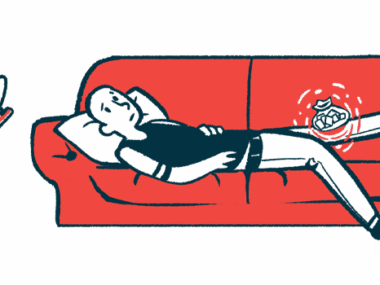Jaw pain disorders highly prevalent in women with hEDS: Study
Pain, TMJ clicking, fatigue are common symptoms in women with hEDS, HSD
Written by |

Jaw pain, fatigue, and other symptoms of temporomandibular disorders (TMD) are quite common in women with hypermobile Ehlers-Danlos syndrome (hEDS) or hypermobility spectrum disorders (HSD), according to a recent study from Sweden and Finland.
TMD are conditions affecting the joint that connects the jawbone to the skull. They may cause pain, impair chewing, and result in noises such as clicking and crepitation — a crunching or popping sound.
“Among adult women with confirmed hEDS, socio-demographic and health-related factors and [coexistent] symptoms were significantly associated with TMD but with differences regarding age group,” researchers wrote. “Based on our findings, a multidisciplinary approach needs to be considered in the treatment of TMD.”
The study, “Risk factors associated with symptoms of temporomandibular disorders among women with hypermobile Ehlers–Danlos syndrome: Questionnaire-based study in Finland and Sweden,” was published in the Journal of Oral Rehabilitation.
hEDS, the most common type of EDS, is characterized by symptoms such as soft, fragile skin, hypermobile joints, frequent joint dislocations, and abnormal curvature of the spine, named scoliosis.
Joint hypermobility raises risk of TMD
Due to joint hypermobility, people with hEDS or HSD are at risk for TMD. However, the prevalence of TMD among such patients has not been widely studied. Of note, HSD is characterized by similar symptoms to those of hEDS though it does not fulfil the diagnostic criteria of this type of EDS.
In the study, scientists in Sweden and Finland set out to assess TMD symptoms and risk factors among adult women, born in either of the two countries, who had been diagnosed with hEDS or HSD.
A total of 185 women were enrolled to fill out a questionnaire, which consisted of 63 questions related to their self-perceived general and oral health, EDS types, family history, TMD-related and coexistent symptoms, and psychological factors. For the analysis, patients were divided into women ages 27 to 50 and those ages 51 to 78.
In the total sample, the most commonly reported symptoms were TMD pain (95%), temporomandibular joint (TMJ) clicking (90%), and jaw pain or fatigue (80%). Jaw pain and fatigue were slightly more common in the older patient group (81% vs. 78%).
Other less common symptoms included TMJ crepitation (63%) and dislocation (44%). About 91% of the patients reported poor general health, fatigue, and bruxism (teeth grinding).
Most women who reported pain had family history of hEDS, HSD
Overall, most women who reported pain were born in Sweden and had a family history of hEDS or HSD. Among the younger group, secondary education, self-reported poor oral health, and mild symptoms of anxiety and depression were associated with a higher prevalence of TMD pain.
Pain symptoms were more common in older patients when they had university education, self-reported good oral health, worst body pain (not in the joints), and normal to mild levels of anxiety and depression.
In the younger group, self-reported worst body pain the head, neck, arm, back, stomach or feet, and university education were significantly associated with jaw pain/fatigue. Living alone was associated with TMD pain.
Older patients who were regularly on birth control medications had jaw pain/fatigue more frequently. Similar to younger patients, those with university education had these symptoms less commonly.
This indicated the level of education, other symptoms such as generalized body pain or psychological symptoms, and oral health quality, were generally associated with the prevalence of TMD among both age groups.
“Taken together, TMD among hEDS/HSD is complex and multifactorial, requiring a multidisciplinary approach. Previous studies have suggested such an approach within management of chronic pain among EDS,” the researchers concluded.






